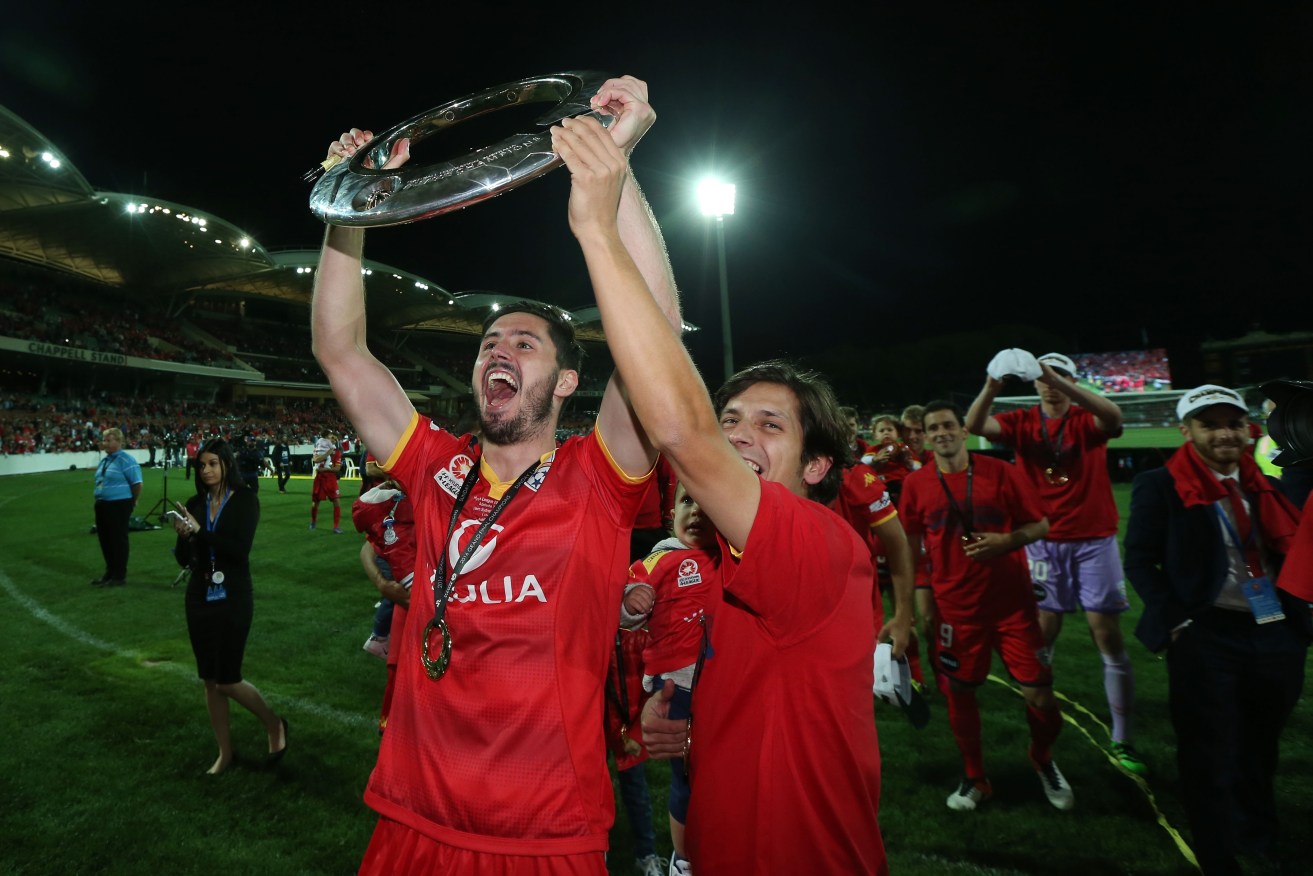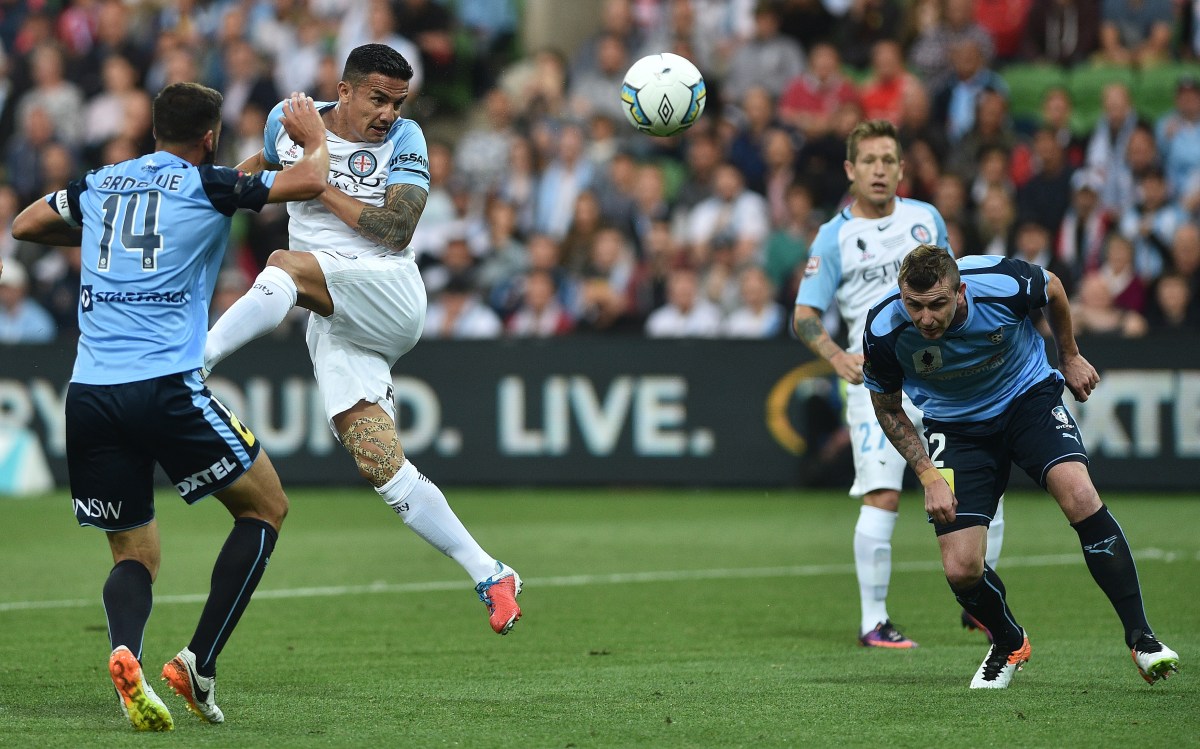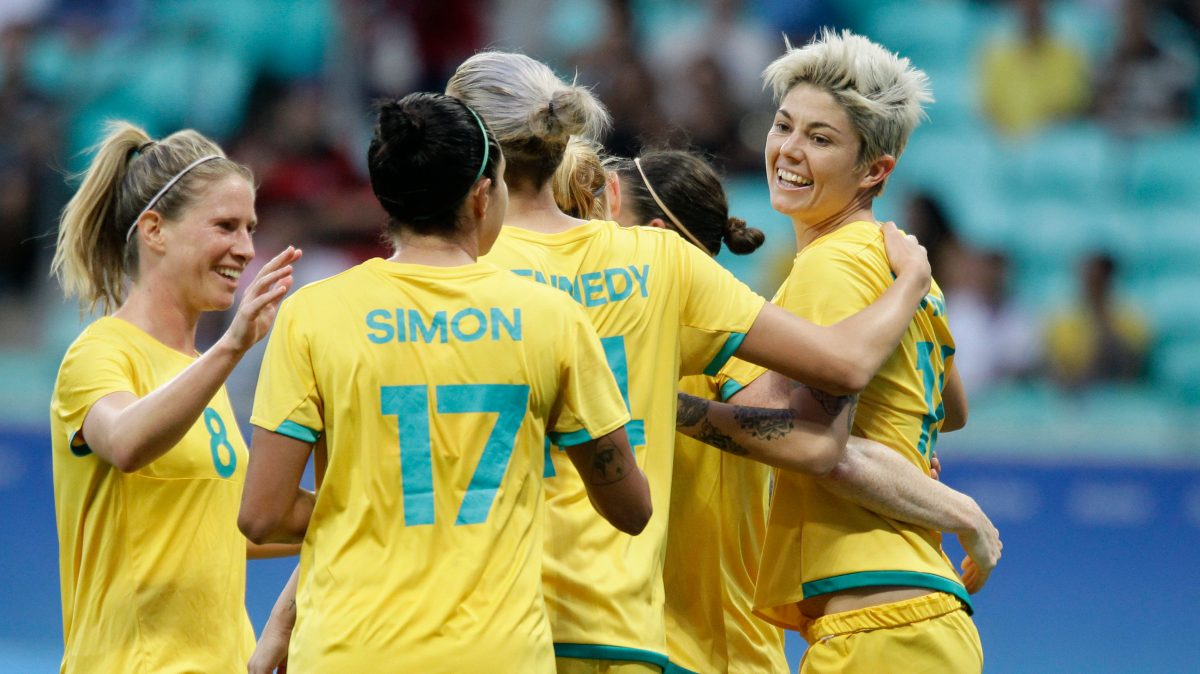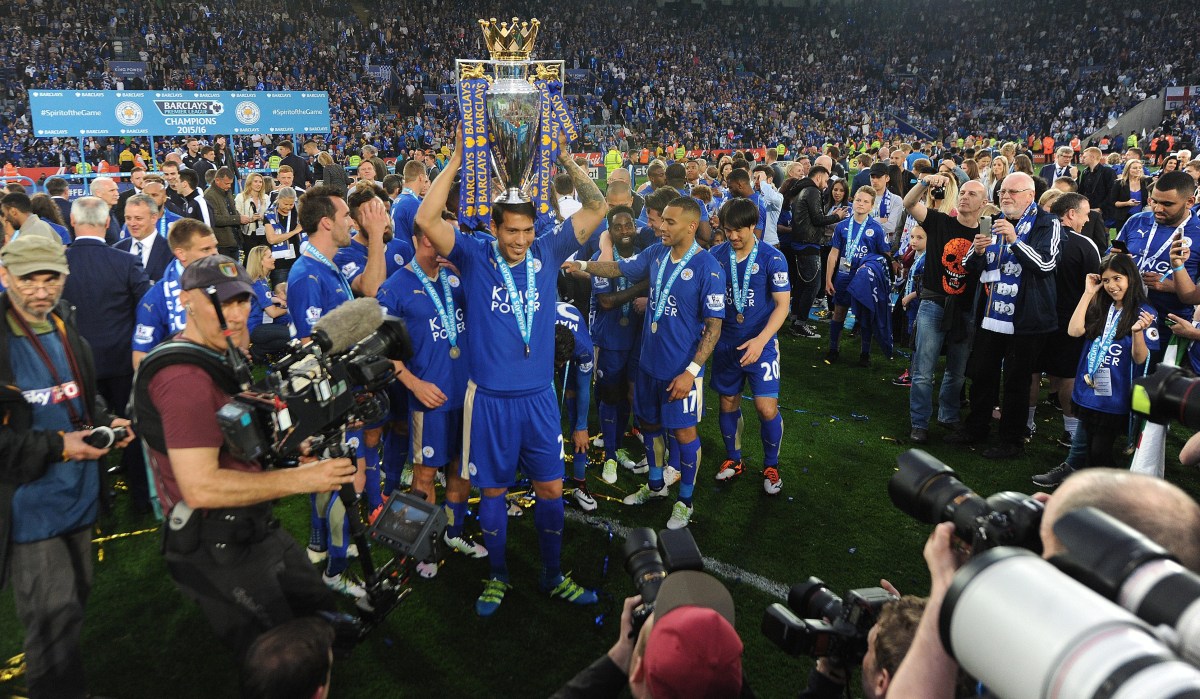The highest of highs, the lowest of lows – and the slow death of possession football
Paul Marcuccitti brings the curtain down on a year that saw underdogs shine but, annoyingly, also pointed to business as usual in 2017. Most tellingly in the lingering failure to recognise that dominating possession is no guarantee of victory.

Dylan McGowan and Pablo Sanchez celebrate victory with Adelaide United teammates after winning the A-League Grand Final in May. It's been a long way back down since then. Photo: James Elsby / AAP
The trouble with summarising calendar years in sport is that seasons often cross over them.
We could easily say that 2016 was Adelaide United’s best. Unlike every other year, it delivered a championship.
But it’s also delivering a horrid title defence. The Reds are likely to still be bottom of the A-League when they begin their match in Wellington on New Year’s Day. Hopes of an improved second half of the season were greatly diminished by Friday night’s masterclass in allowing a middling opponent to waltz its way to one-on-ones with ‘keeper Eugene Galeković.
It’s been a while since Sydney was nicknamed ‘Bling FC’. With Graham Arnold at the helm, you would only use that term in a fit of irony
Throw in the knockout blow delivered by Redlands United (from Queensland’s league) in the FFA Cup and you could say that 2016 managed to deliver both the highest of highs and the lowest of lows.
There would be some consolation if another Cinderella story were being written in this season’s A-League. Instead it is being dominated by Sydney FC, the competition’s most dislikable club.
It’s been a while since Sydney was nicknamed “Bling FC”. With Graham Arnold at the helm, you would only use that term in a fit of irony.
Nevertheless it remains the team of the establishment.
Australian soccer has generally been run in Sydney by Sydneysiders (and some might add: for Sydneysiders).
Many of the famous stoushes of yesteryear among people seeking power in the game’s administration pitted one against another.
Yet most of these characters share a love of Sydney FC.
Meanwhile the club’s home games regularly feature more than 30,000 empty seats. If all that isn’t bad enough, the song most loved by the few supporters that do turn up uses a Rod Stewart tune.
At least we got to enjoy the social media meltdown that followed Football Federation Australia’s decision to stage last month’s FFA Cup final (between Sydney FC and Melbourne City) in Melbourne. A jilted lover unexpectedly seeing his or her ex dancing with a new flame would have been calmer.
You probably know that Sydney also lost the final but I just thought I’d mention it anyway.

Just a reminder: Sydney lost. Photo: Julian Smith / AAP
Despite being on the receiving end of hypercritical fans’ barbs roughly every 30 seconds, 2016 wasn’t the worst year for Football Federation Australia. Last year closed with the leaking of a list of people banned from attending games, fan protests, a collective bargaining brawl with the Professional Footballers Association and strained negotiations with Wellington Phoenix over the Kiwi side’s future.
As always we’ve seen some predictable tabloid frenzy over a couple of flares this year but overall there’s been much less of the angst that marked the last few months of 2015. And there was the bonus of Damien de Bohun’s resignation from the position of Head of the A-League. Irrespective of what he achieved in that role, there’s no question he put a lot of fans’ noses out of joint. Naturally he was replaced by a Sydneysider.
The biggest brouhaha of recent months has been about refereeing – the subject that fans and scribes revert to when there’s an absence of other outrages.
Closer to home, Football Federation South Australia would certainly be celebrating 2016. It received funding for ground improvements across the state which will include the rolling out of eight artificial pitches (which can be played on far more frequently than natural turf).
FFSA’s goal of adding six clubs to expand from 30 teams spread across two divisions to 36 spread across three has now been achieved. That has included picking up teams from the unaffiliated Amateur League, a trend that is likely to continue.
The state’s governing body also streamlined its peak women’s competition and brought in playoffs to decide its champion team. Grand final night attracted an excellent crowd and was live streamed.
There is still a long way to go but there has been a little more progress for women’s soccer in Australia in 2016. The W-League saw the result of Melbourne City’s massive investment with the team winning the title at its first attempt. Attendances have been well up so far this season and, two years after the news that the ABC would cut its coverage of matches, the arrangement that sees at least one game a week broadcast on both Foxtel and ABC seems secure.
Even more importantly, it appears that FFA is looking at improving pay and conditions for players next year. That can’t happen soon enough.
Adelaide United Women, a cellar dweller for much of the W-League’s history, had a memorable 2015-16 season which saw it fall agonisingly short of a first ever finals appearance. The year also saw the team brought back under Adelaide United Football Club after it had been run by FFSA for some time. Unfortunately, it’s winless so far this season despite some brave attacking performances.
The Matildas achieved their highest ever ranking – fifth in the world – in March and are currently seventh. The Olympics saw them reach the quarter-finals of a global tournament for the fifth time. Unfortunately they were eliminated at that stage for the fifth time as well and it could hardly have been more heartbreaking with the team on the wrong end of a long penalty shootout against host nation Brazil.

Michelle Heyman celebrates an Olympic goal with Matildas teammates. Photo: Arisson Marinho / AP
Still the Matildas fared much better than the Socceroos did in 2016. In March Australia booked its place in the final group stage of World Cup qualifying in the Asian confederation but it’s mostly been downhill from there. There was a loss in a friendly against England, and a win and a loss in a two-game series against Greece. The last of those matches exposed the limitations of the Socceroos’ high possession game.
But if there is a Plan B it has never been rolled out and after five of ten games in this group – which will decide who qualifies, who gets another chance through playoffs, and who gets eliminated – Australia has stuttered to two wins and three draws.
Most of our commentariat and many coaches – including our most important one – maintain an adherence to the possession game
Next year could see the Socceroos fall in World Cup qualifying for the first time since 2001.
Which segues into the tactical story of 2016: the triumph of teams that have abandoned possession soccer. We saw it here with Adelaide United which turned around its horror start to the 2015-16 season after dumping the tactic.
Unfashionable Leicester City scored a shock Premier League title despite ranking 18th out of the competition’s 20 teams in possession held. Atlético Madrid also eschewed possession and, with a squad worth a fraction of those of Real Madrid and Barcelona, pushed both all the way in Spain’s Primera División, and was within a whisker of becoming European champion.

Leicester City outfoxed their rivals to win the English Premier League. Photo: Peter Powell / EPA
Then we saw UEFA Euro 2016 which, for many, marked the official death of the possession game.
Yet the concept had been long-disproven at club level and should have failed all tests of logic in the first place. Teams like Barcelona and Bayern Munich, and national sides like Spain and Germany, have succeeded because they have exceptional players, not because they hold the ball a lot. And all of them were undone in international competition this year by opponents that were happy to concede possession to them.
Back here in Australia, matches played so far in the 2016-17 A-League season have seen the team holding the most possession winning 15 times and losing on 23 occasions.
But it’s still not sinking in.
Most of our commentariat and many coaches – including our most important one – maintain an adherence to the possession game.
For this stubbornness, thank the 20th century SBS influencers who convinced a generation in Australia that there were right ways and wrong ways to play the game.
And slow internet.
One thing is certain: if the possession game brings the Socceroos undone in 2017, the resulting hysteria will give us all the wrong conclusions.
Have a happy new year.
Paul Marcuccitti is a co-presenter of 5RTI’s Soccer on 531 program which can be heard from 10am on Saturdays. Manton St Tales will return in the new year.




